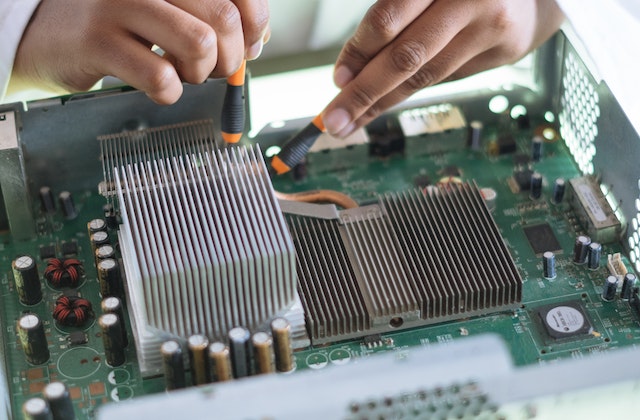The Evolving Landscape of Semiconductor Manufacturing
Leading-edge chip production requires substantial investments in research, talent, supply chains, intellectual-property protection and more. A single misstep in any of these areas can significantly decrease a company’s return on investment.
Global economic conditions also have a major impact on semiconductor demand. TSMC, GlobalFoundries and others have invested billions in new fabs to maintain stable growth.
The U.S.-China Trade War
The escalating trade war between the U.S. and China could have serious consequences for the semiconductor industry. As the two countries exchange threats and levy tariffs, it’s vital that chipmakers keep an eye on geopolitics to prevent supply chain disruptions.
In late last year, the U.S. imposed restrictions on semiconductor manufacturers and designers that sell to Chinese tech giant Huawei Technologies. Then in September, the Commerce Department raised the bar for equipment makers that want to work with SMIC, China’s largest chip foundry.
The move is intended to curb Beijing’s ability to obtain American technology through civilian supply chains and incorporate it into its 5G wireless communications technology and industrial control systems. The issue highlights the growing need for companies to strengthen their domestic manufacturing and build a robust industry ecosystem. It also makes it more important to select fab locations with these factors in mind, as well as to be nimble and prepare for changing market conditions.
The COVID-19 Pandemic
Semiconductors are vital to the world economy as they enable revolutionary applications like augmented and virtual reality, artificial intelligence, Industry 4.0 technology, and 5G communication. They are also essential to the development of self-driving vehicles and other technological advancements, making them a necessity for many industries.
The COVID-19 pandemic underscored just how crucial semiconductors are, resulting in a shortage that forced a reduction in production of vehicles and consumer electronics. This triggered inflationary pressures across the globe.
The COVID-19 pandemic also demonstrated the vulnerability of having all semiconductor manufacturing originate from one country. As a result, countries are passing incentive plans to draw OCMs home. In Europe, Intel has announced plans to invest in a new chip plant in Germany and expand its existing sites in Ireland, France, and Italy. Bosch has also committed to building a new fab in Germany, showcasing the importance of the continent to the global semiconductor market. The move will allow Bosch to produce silicon carbide (SiC) chips, which offer a longer battery life and better efficiency than traditional silicon chips.
Supply Chain Disruptions
In addition to the broader issues that continue to affect the semiconductor industry, supply chain disruptions are also a major concern. For example, the Russian invasion of Ukraine has cut off access to key raw materials used in semiconductor production (such as neon).
Unlike most large consumer electronics companies that manufacture their own chips, semiconductor manufacturers such as TSMC produce semiconductors for other companies to use in their products – known as the foundry model of business. Because of this, they are less able to withstand protracted shortages in chip availability.
To improve their resiliency in the face of future supply chain disruptions, chip producers should consider investing in market-driven incentives to reshore production. This would provide them with greater visibility into sub-tier supply chains and reduce intermarket dependencies. In addition, they should increase capacity in the markets where there is the greatest mismatch between local supply and demand, such as by dedicating new fabs for the newest technology nodes that end customers need.
IP Protection
The growing demand for AI, machine learning, and 5G requires high-performance chips. Additionally, IoT applications require semiconductors to increase battery efficiency, boost sensor capabilities, and enable connectivity. These technologies drive semiconductor sales, but also require advanced research and development, resulting in IP protection as companies invest in patents to remain competitive.
As a result, fab locations are becoming increasingly strategic. Local governments may subsidize fab construction, provide tax incentives, or facilitate partnering with industry clusters in order to attract semiconductor companies that can foster innovation and reduce operational costs.
The United States, South Korea, Japan, and Taiwan are forming an alliance called Chip 4 to minimize China’s regional influence in an industry critical to national security. The alliance aims to diversify supply chains away from China, coordinate consistent export controls, and protect intellectual property. The alliance may pave the way for a new trade architecture that includes multilateral cooperation on semiconductors and other critical industries.




Comments are closed.